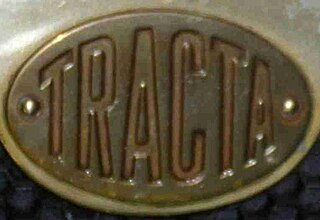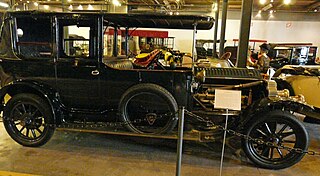Related Research Articles

De Dion-Bouton was a French automobile manufacturer and railcar manufacturer operating from 1883 to 1953. The company was founded by the Marquis Jules-Albert de Dion, Georges Bouton, and Bouton's brother-in-law Charles Trépardoux.

Trojan was a British automobile manufacturer producing light cars between 1914 and 1965, and light commercial vehicles for a short time.

Elva was a sports and racing car manufacturing company based in Bexhill, then Hastings and Rye, East Sussex, United Kingdom. The company was founded in 1955 by Frank G. Nichols. The name comes from the French phrase elle va.

Albion Motors was a Scottish automobile and commercial vehicle manufacturer.

The Messerschmitt KR175 microcar (1953–1955) was the first vehicle built by Messerschmitt under its 1952 agreement with Fritz Fend. In concept, although not in actual design, it was, in principle, a development of the Fend Flitzer invalid carriage. Approximately 15,000 were built before it was replaced by the Messerschmitt KR200 in 1956.

PTV was a trademark of Automóviles Utilitarios S. A. a microcar manufacturer based in Manresa, near Barcelona, Spain. The PTV brand was at one time the second biggest volume microcar sold in Spain, beaten only by the Biscúter. Compared to the Biscúter it was more luxurious, offering proper doors, two-tone paint, chrome trim and 12 inch wheels.

Donnet was a French manufacturing company of the early twentieth century. Founded as Société des Établissements Donnet-Denhaut by Jérôme Donnet and François Denhaut at Neuilly-sur-Seine in 1914, the firm manufactured a highly successful line of patrol flying boats for the French Navy. The company became known simply as Donnet after designer Denhaut left it in 1919, but did not continue to build aircraft for long afterwards.
The Albaugh-Dover Co. was an American manufacturer of farm implements, tractors, and automobiles based in Chicago, Illinois.
The Perry was a British car made by the Perry Motor Company based in Tyseley, Birmingham who made cars between 1913 and 1916.
The SA was Toyota's first new passenger car design after World War II. It was the first in a family of vehicles before the introduction of the Crown. A series of light trucks also shared the chassis and major components of these passenger cars.

Tracta was a French car maker based in Asnières, Seine, that was active between 1926 and 1934. They were pioneers of front-wheel-drive vehicles.

The Lomax is a British kit car based on mechanical components of the Citroën 2CV. It has been in production since 1982 when it was introduced by the Lomax Motor Co of Willoughton, Gainsborough, Lincolnshire. In the late 1980s the production was transferred to the Mumford Motor Co. of Gigg Mill, Nailsworth, Gloucestershire, where it was produced until the early 1990s. From then it was built at Cradley Motor Works in Cradley Heath, West Midlands. By 2009 the car was being made by Cradley Motor Works of St Leonard's-on-Sea, East Sussex. It was designed by Nigel Whall. From the early 1990s the Lomax has also been sold in the Netherlands and Germany.

The Vauxhall 27, 30 and 35 h.p. is a large six cylinder car manufactured by Vauxhall from 1910 to 1914. The 27 h.p. was Vauxhall's first six-cylinder car.

Georges Mochet began to produce cycle-cars at his, now-demolished, premises at 68, Rue Roque-de-Fillol at Puteaux in approximately 1946 and by about 1952 had progressed to more modern looking two seater micro-cars and powered two-wheelers. In 1958, with approximately 3,000 vehicles manufactured, production ended.
Julien is a former French automobile manufacturer. The Paris based Société des Études Automobiles M. A. Julien presented its first prototype in 1946 and automaking activities came to an end in 1949, probably without any of the developments having progressed beyond the prototype stage.

Sima Violet was a French manufacturer of cyclecars between 1924 and 1929.

Villard was a French automobile manufacturer between 1925 and 1935.

The Alfa Romeo Scarabeo is a concept car engineered by Giuseppe Busso and Orazio Satta Puliga for Alfa Romeo with a body designed by Sergio Sartorelli at Officine Stampaggi Industriali. The car debuted at the Paris Motor Show in 1966.

The Horley Motor & Engineering Co. Ltd was a British automobile manufacturer in Horley, Surrey, producing light vehicles between 1904 and 1909. The brand names were Horley and No Name. Horley collaborated with Lacoste & Battmann, the French supplier of vehicle components, assemblies and unbranded vehicles equipped with Aster, De Dion-Bouton or Mutel engines.